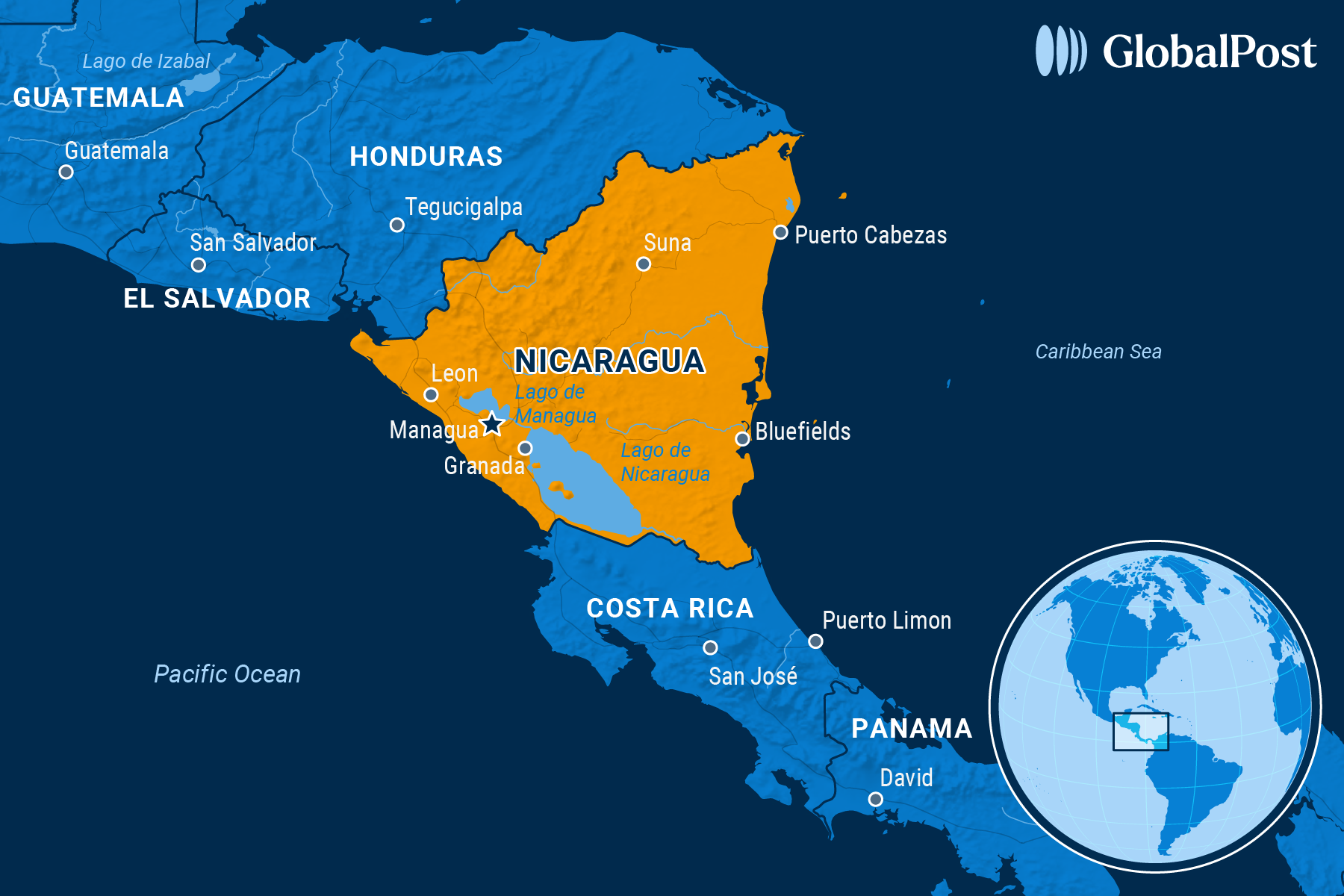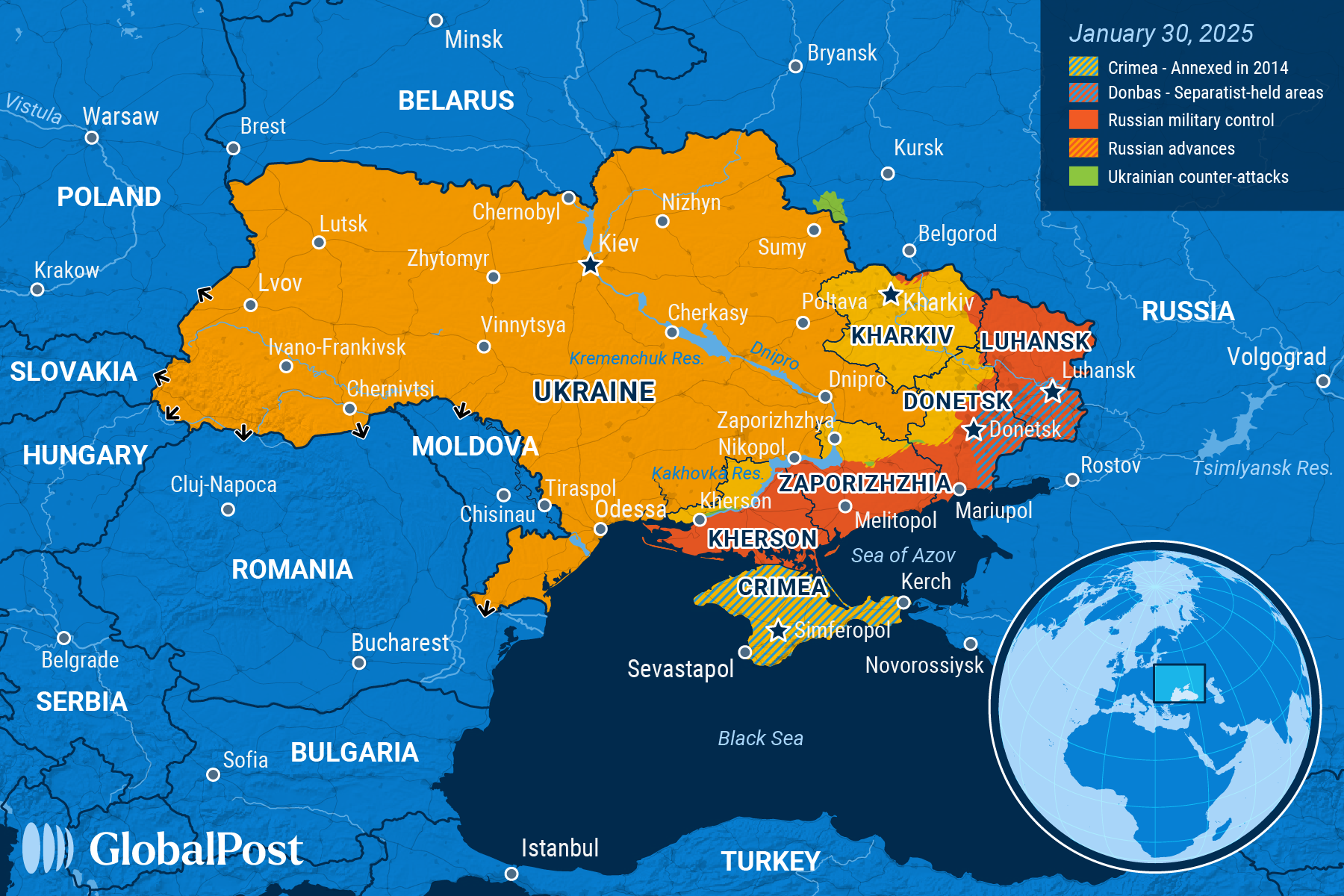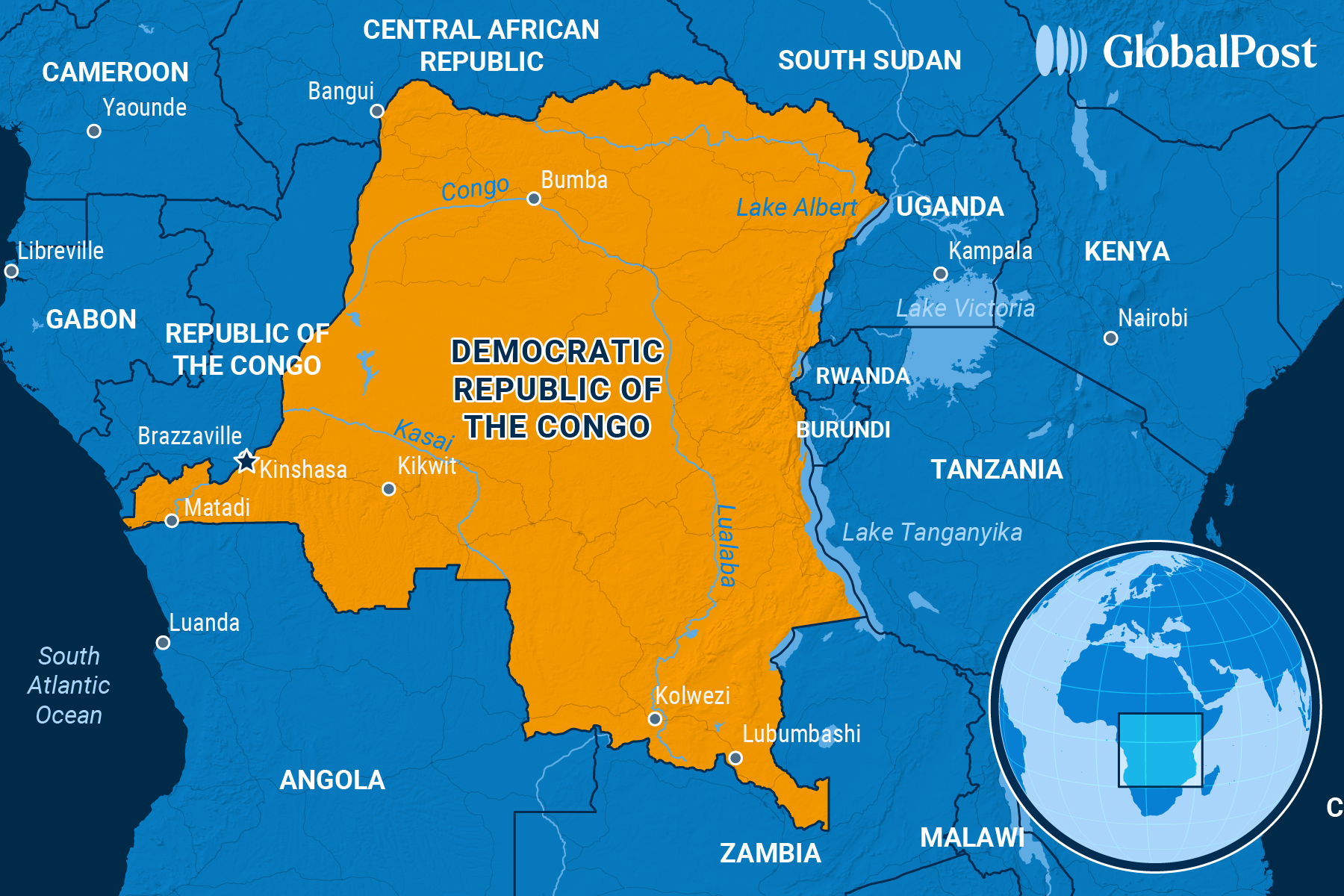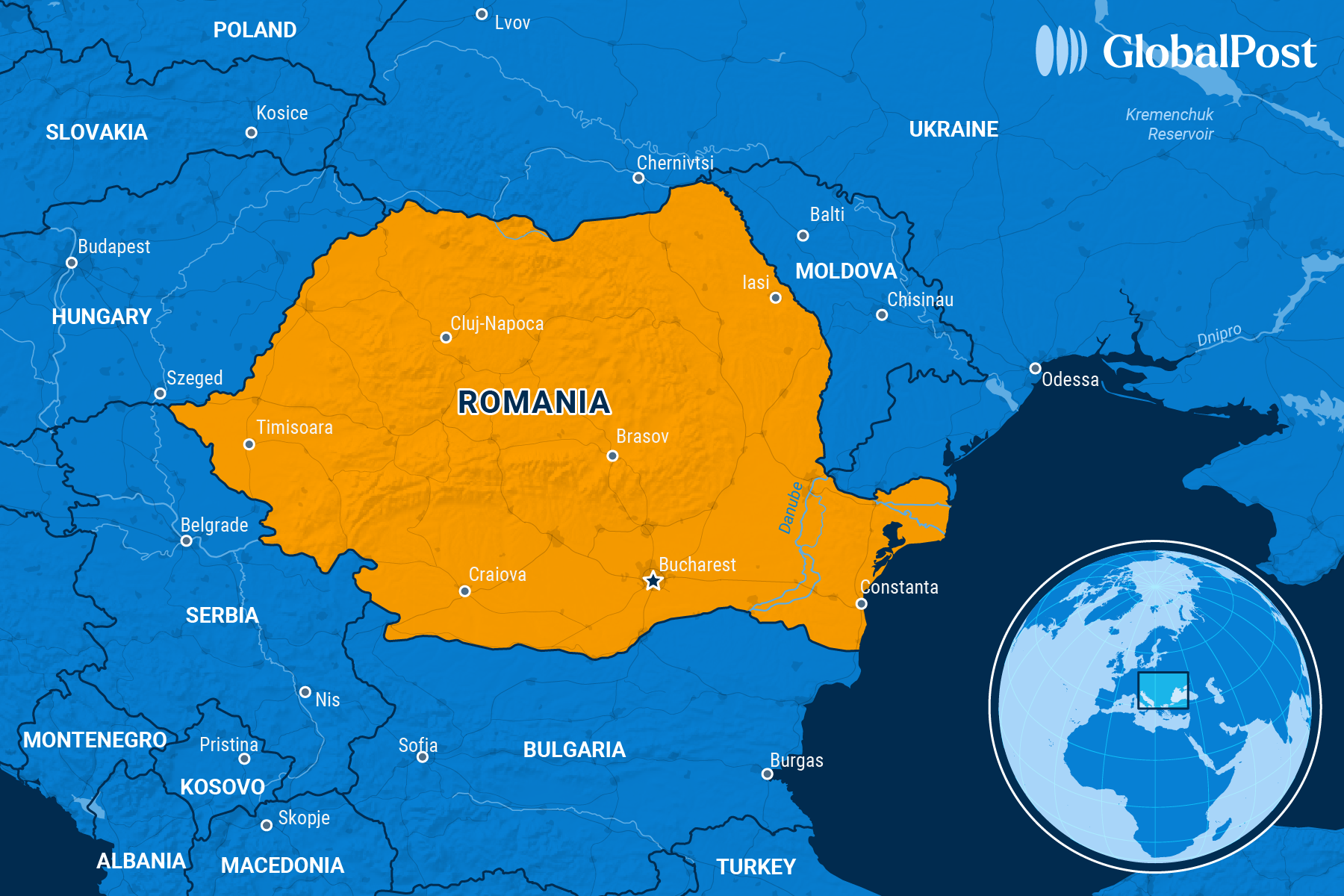The Guerrillas of Peace: How Nicaragua’s First Couple Cemented ‘Total Control’
NEED TO KNOW
The Guerrillas of Peace: How Nicaragua’s First Couple Cemented ‘Total Control’
NICARAGUA

Nicaraguan officials recently swore in 30,000 masked civilians as “volunteer police,” a paramilitary force intended to help the country’s leaders crack down on the population.
Dressed in white shirts and black pants, with black ski masks, the individuals went into formation on the Plaza de la Fe in Managua, the country’s capital, to be sworn in as President Daniel Ortega and his wife, “co-president” Rosario Murillo, watched.
“We swear in this heroic volunteer police, guerrillas of peace,” said Murillo.
The new militia, made up of about 50,000 people, was created to support the security forces. It arises out of an overhaul of the constitution that took effect on Feb. 18 by the legislature controlled by the ruling Sandinista Front, led by Ortega.
It’s the latest move by the husband-wife team to take “total control” of the country.
The reform means that all branches of government are now under the control of the executive. It also elevated Murillo from vice president to “co-president,” and allows for unlimited vice presidents, which would guarantee presidential succession for Murillo and their family, in what some call a “family dictatorship.” A number of their children already hold top posts in the country.
The reform also expanded the presidential term to six years from five in a move that further consolidated the family’s firm grip on power.
The reforms have been defended by government allies as deepening a nearly 50-year-old revolution. “We have to go step-by-step and make it clear that Nicaragua’s government is a revolutionary government, even if that hurts some people’s feelings,” said Congressional leader Gustavo Porras.
Ortega, 79, rose to power as a leader of the leftist Sandinista guerrilla movement that overthrew the autocratic Somoza family dynasty in the late 1970s. After serving as president from 1985-1990, Ortega won office again in 2007 and is currently serving his fourth consecutive term.
With this latest reform, the Nicaraguan government dismantled the last remaining checks and balances and is “systematically executing a strategy to cement total control of the country through severe human rights violations,” United Nations officials said in a new report.
“The state and the ruling Sandinista party have virtually fused into a unified machine of repression with domestic and transnational impact,” said Jan Simon, chair of the Group of Human Rights Experts on Nicaragua established in 2022. “Ortega and Murillo operate a wide intelligence machine, surveilling the population and selecting the targets for the violation of rights, acting as ‘the eyes and ears’ that allow (the Nicaraguan government) to obtain and maintain total control over people.”
The crackdown began following the 2018 protests that were ignited by a social security overhaul and were met with violent repression by the state. During those protests, more than 300 people were killed in the violence, often perpetrated by heavily armed hooded men, whom the government called “the people.” The Ortega government calls the 2018 protests a coup attempt sponsored by Washington.
Since then, the Nicaraguan government “has deliberately transformed the country into an authoritarian state, where no independent institutions remain, opposition voices are silenced, and the population – both inside and outside Nicaragua – faces persecution, forced exile, and economic retaliation,” the UN officials said.
It has imprisoned political adversaries, religious leaders, journalists, civil rights activists and academics, then exiled them, stripping hundreds of their Nicaraguan citizenship and possessions. Since 2018, it has closed more than 5,000 organizations, largely religious, and forced almost 300,000 people to flee the country.
As repressive as it has been since 2018, observers say it’s due to get worse because of the new militia, which echoes the masked groups that roamed the streets during the 2018 protests.
Meanwhile, the government has been preventing Nicaraguans from returning to their country under a change in the immigration law that allows the denial of the entry of its citizens if they are considered a threat to the peace and security of the country, Voice of America reported.
Recently, US Secretary of State Marco Rubio blasted Nicaragua and other repressive regimes in the region, accusing them of being “enemies of humanity” and of causing a regional migration crisis.
Allan Bermudez, 54, once a university professor in Nicaragua, is part of that crisis. He did not choose to leave.
He told the Associated Press that he was imprisoned after being accused of conspiring against the government – the 2018 protests centered around university students. In February 2023, he was among 222 prisoners put on a flight to the United States without being told where they were going. The US allowed him to stay temporarily on a humanitarian parole program while he applied for asylum.
Currently, he works in a Dunkin’ Donuts and struggles to afford food or medicine or the funds to help his mother, wife and daughter who are in Nicaragua. He is stateless, which means he has no country, no passport and nowhere to go.
He applied for asylum last year, but said he hadn’t heard back as of the end of November. On Jan. 20, the US government tried to end the program. He can stay – temporarily.
“I can’t leave, my hands are tied,” he said. “All I can do is pray that God helps me.”

THE WORLD, BRIEFLY
Throwing the Ball: Ukraine Agrees to Ceasefire, Russia Mulls Terms
UKRAINE

Ukraine agreed to a US-proposed 30-day ceasefire with Russia following negotiations in Saudi Arabia this week, a proposal that could end more than three years of hostilities if Moscow agrees to it, which analysts say is doubtful, Euronews reported.
The deal comes after high-ranking US and Ukrainian officials met in the coastal city of Jeddah earlier this week to discuss a cessation of hostilities and smooth relations with Ukraine following a heated White House meeting between US President Donald Trump and his Ukrainian counterpart Volodymyr Zelenskyy on Feb. 28.
The two parties released a joint statement Tuesday confirming their commitment to an immediate 30-day truce that could be extended. US Secretary of State Marco Rubio, who participated in the Saudi talks, said he will now present the offer to Moscow, adding that “the ball is in the (Russians’) court.” He cautioned that if Moscow does not agree to the deal, “we’ll unfortunately know what the impediment is to peace.”
Kremlin spokesman Dmitry Peskov said Wednesday that Moscow was “carefully studying” the terms and awaiting further details from US negotiators, according to Radio Free Europe.
Following the meeting, the Trump administration announced it would immediately resume intelligence sharing and military support for Kyiv, which had been suspended earlier this month, NBC News wrote. Russia is reportedly angry at the resumption and also at Trump’s threat of new sanctions.
Zelenskyy, who did not attend the Jeddah talks, welcomed the development as a “positive step” and emphasized Ukraine’s commitment to peace “from the first moment of the war.”
In addition to the ceasefire, Ukraine and the US also agreed to expedite a separate deal on developing Ukraine’s critical mineral resources, which had been stalled since the Feb. 28 meeting. The joint statement described the minerals deal as essential for “expanding Ukraine’s economy and guaranteeing its long-term prosperity and security.”
Meanwhile, Russian lawmakers and commentators have portrayed the ceasefire proposal as a diplomatic victory for Moscow, claiming that Washington’s involvement in the ceasefire talks underscores Ukraine’s weakened position.
Former Kremlin adviser Sergei Markov suggested that Russia might counter the proposal by demanding a 30-day suspension of Western arms deliveries to Ukraine.
Meanwhile, Trump administration officials are planning to meet with their Russian counterparts shortly to discuss the ceasefire terms. There is also speculation that Trump and Russian President Vladimir Putin could hold a direct phone call soon.

Fleeing the Flames: Tens of Thousands Try to Escape Congolese Conflict
DEMOCRATIC REPUBLIC OF THE CONGO

Escalating violence in eastern Democratic Republic of the Congo (DRC) has created a humanitarian crisis in the region, human rights officials said this week, with tens of thousands of Congolese crossing the borders into Burundi and Uganda, France 24 reported.
The majority of the 63,000 refugees who have crossed the border in recent weeks are women, children and the elderly, according to United Nations officials. They are crammed into makeshift camps that have reached capacity. There are widespread shortages of food, clean water, and medical supplies.
Burundi’s officials said the country is witnessing the biggest humanitarian crisis it has seen in decades.
The refugee crisis began soon after the Rwanda-backed M23 rebels launched an offensive to seize mineral-rich territory in eastern DRC in January. Since then, it has captured key regional towns such as Goma and Bukavu and is advancing further into the region.
More than 7,000 people have been killed in the offensive.
The DRC is struggling to hold off the M23 rebel group but is facing defections within its forces. Now, inspired by the proposed Ukraine-US mineral deal, the country is hoping the US will help repel the rebels via a mineral agreement, BBC reported.
DRC spokesperson confirmed that the country is looking to supply Washington “with some critical minerals” in a possible deal that includes an “economic and military partnership.”
The country is estimated to hold $24 trillion worth of untapped resources, such as cobalt, gold, and copper but also lithium, tantalum, and uranium. These elements are an essential part of everyday tech in the West such as smart phones and laptops.
The US has not committed to any deal.
Currently, China dominates the Congolese mineral sector.

Entrance Denied: Romanian Far Right Candidate Banned From Vote
ROMANIA

Romanian far-right politician Călin Georgescu is banned from running in May’s presidential election, the country’s top court decided Tuesday, a ruling that follows the annulment of last year’s election, in which he took the most votes, the Associated Press reported.
The Constitutional Court in the capital of Bucharest issued a final and unanimous ruling to uphold a decision earlier in the week by the Central Election Bureau, which rejected Georgescu’s candidacy following allegations of electoral violations and Russian interference, BBC reported.
It said that Georgescu’s candidacy did not “meet the conditions of legality,” because he “violated the very obligation to defend democracy.”
The top court’s decision was met with “boos” from the crowd gathered outside to support the candidate, with protesters waving Romanian flags and clutching Orthodox Christian icons and crucifixes. They chanted slogans like “Thieves,” “Calin Georgescu is president,” and “Stop dictatorship.”
Intelligence officials say that Russia ran a coordinated online campaign, including almost 800 TikTok videos, to back Georgescu who ran as an independent after his sudden entry into politics. He took the most votes in the first round of elections in November.
Two days before the runoff on Dec. 8, election officials annulled the election.
Georgescu posted a video online saying that he was banned because he is an outsider candidate. He also criticized Romania’s dependence on the European Union and NATO, adding “democracy and freedom are taking their last breath.”
Romania’s far-right – which holds about a third of the seats in parliament – needs to replace Georgescu by March 15. Many speculated that his close political ally, George Simion, would run in his place.
Opponents hailed the court’s decision, saying that Russia is trying to undermine Europe and its liberal values.
Moscow, on the other hand, denies any involvement in Georgescu’s victory, calling the accusation “absolutely baseless.”

DISCOVERIES
The Fear Factor
Humans are predisposed to react with fear to loud, sudden noises or fast-approaching objects.
However, with experience, they learn to suppress instinctive fear of perceived threats, and even enjoy them, for example, fireworks.
Now, a new study shows the hows and whys.
“Our results challenge traditional views about learning and memory,” said Sonja Hofer, senior author of the study.
Researchers from the Sainsbury Wellcome Centre stuck silicon probes into mice’s brains and observed their behaviors while an overhead expanding shadow mimicking an aerial predator approached them.
During their first encounters with the shadow, the mice ran away seeking shelter. However, with repeated exposure and no real danger, the mice learned to stay calm, offering researchers a model to investigate how the brain can suppress fear responses.
Based on previous studies, researchers knew that the brain’s ventrolateral geniculate nucleus (vLGN) area can suppress fear reactions by linking them to previous experiences involving a threat.
The vLGN is situated between the neocortex, responsible for detecting threats, and the brain stem, responsible for activating the body’s instinctive response, the Washington Post explained.
While the vLGN also receives inputs from visual areas in the cerebral cortex, essential in learning whether to fear a visual threat, the researchers discovered that the vLGN is the area responsible for storing these learning-induced memories, too.
Co-lead author Sara Mederos explained that when specific cortical visual areas were not activated, animals failed to learn to suppress their fear responses. However, once the mice had learned when to remain calm, the involvement of the cerebral cortex was no longer essential.
Sonja Hofer, a co-lead author, noted that these findings challenge traditional views on learning and memory. While the cerebral cortex has long been seen as the main driver of these processes, the new study shows it is the subcortical vLGN that actually stores the crucial memories necessary to learn – and unlearn – fear.
The release of endocannabinoids – neurotransmitters that regulate mood and memory – increases neural activity in specific vLGN neurons. This reduces inhibitory input, leading to heightened activity in the vLGN when the subject encounters a visual threat, which in turn suppresses the fear response.
These findings could provide insight into what happens when this mechanism is impaired – when fear response regulation fails in conditions like phobias, anxiety, and post-traumatic stress disorder – and help identify brain areas to target for treatment.
